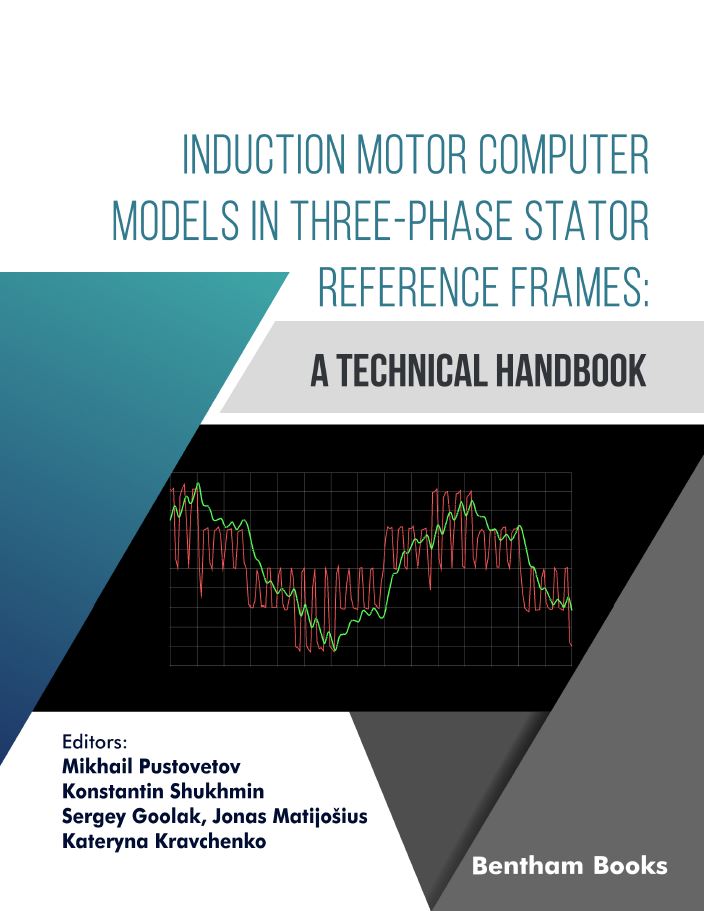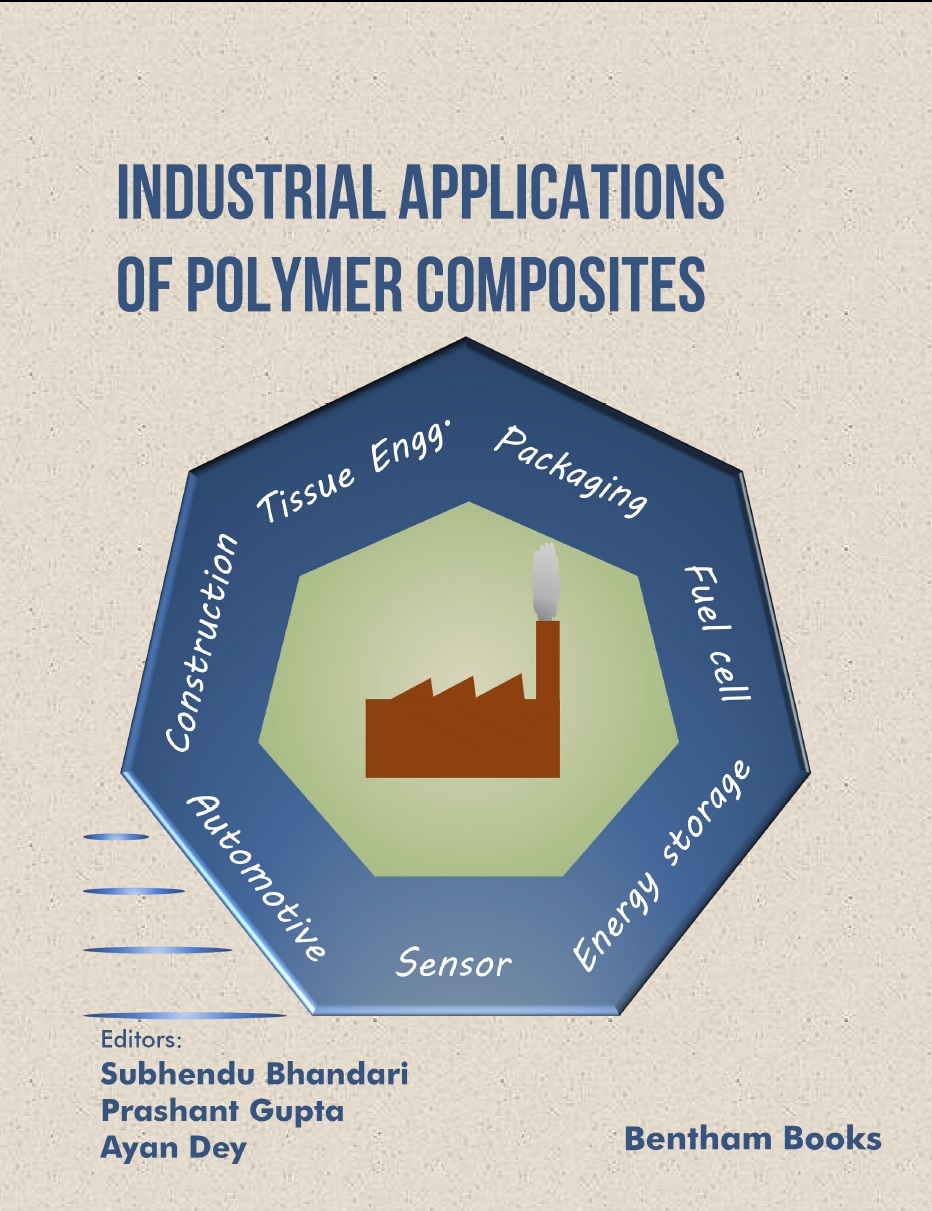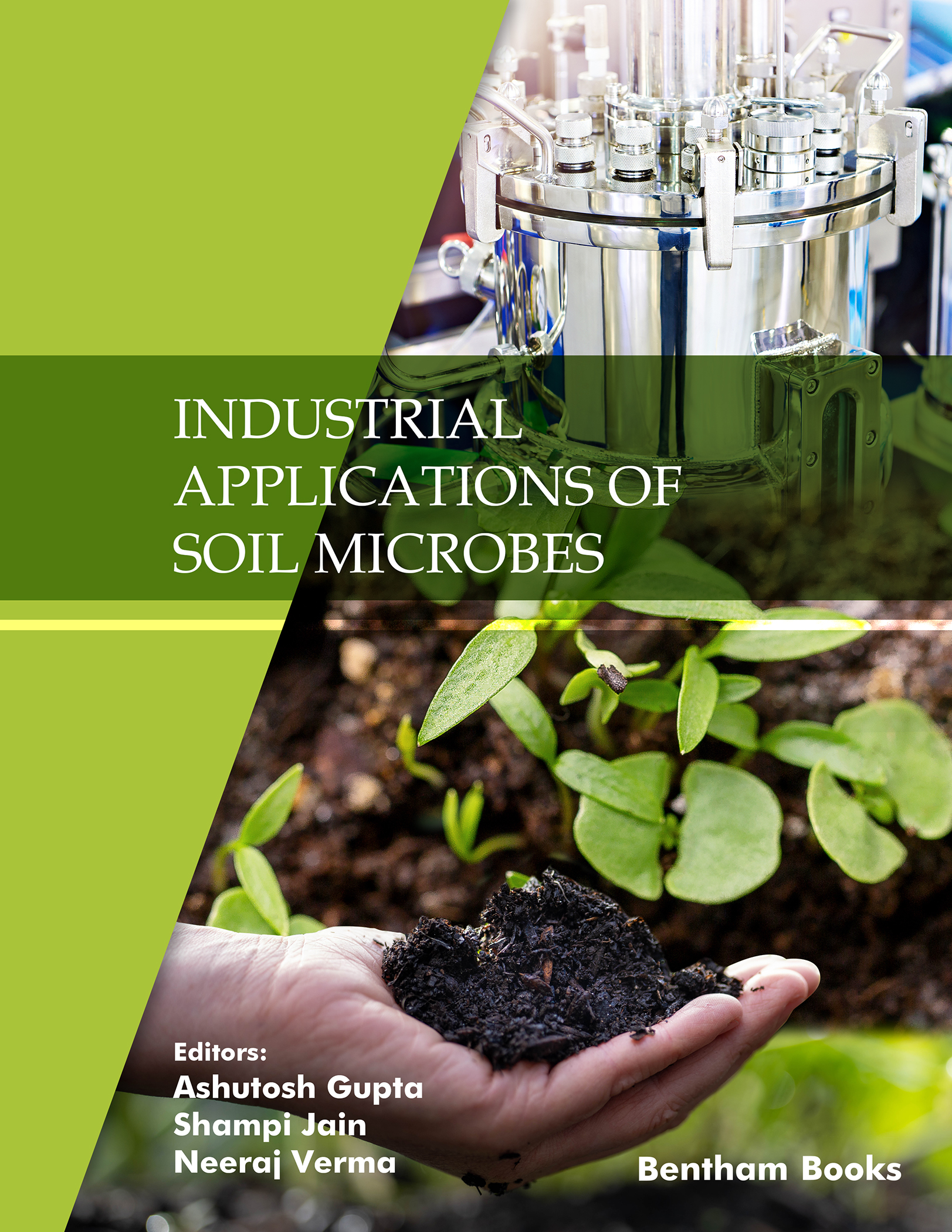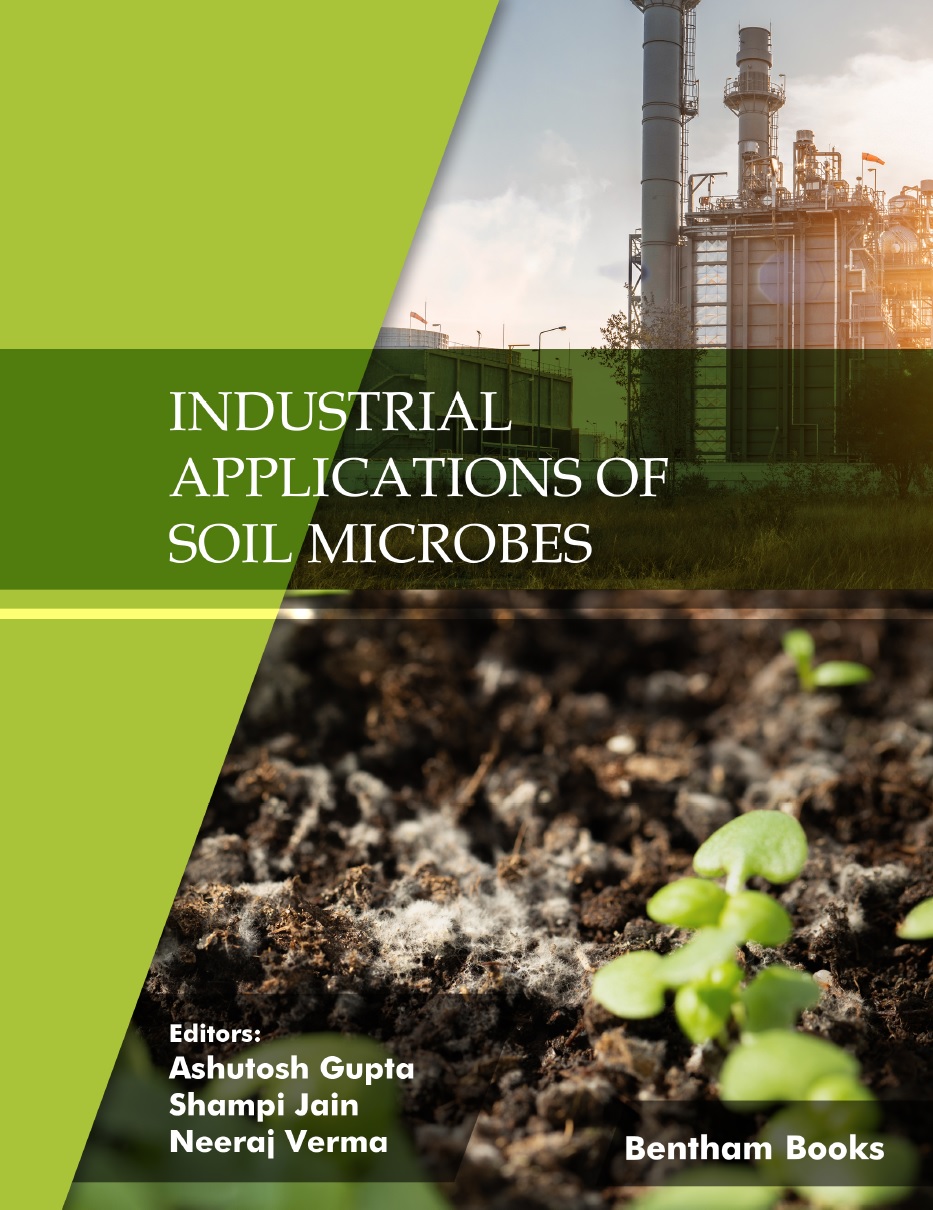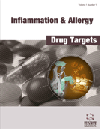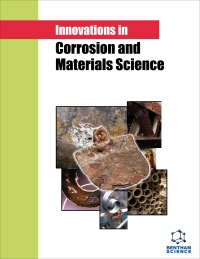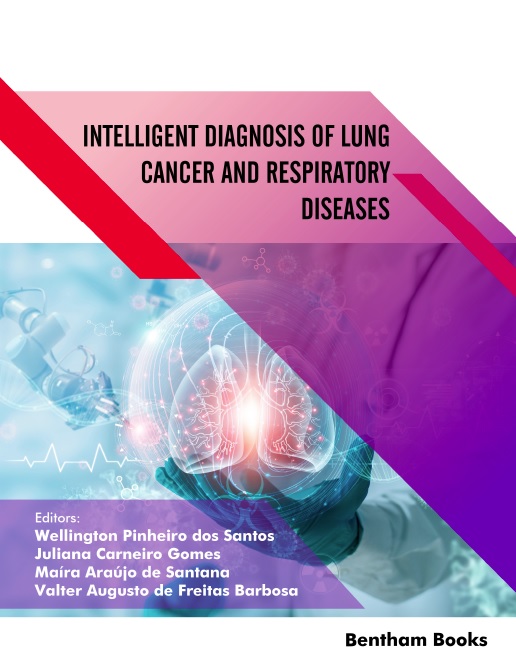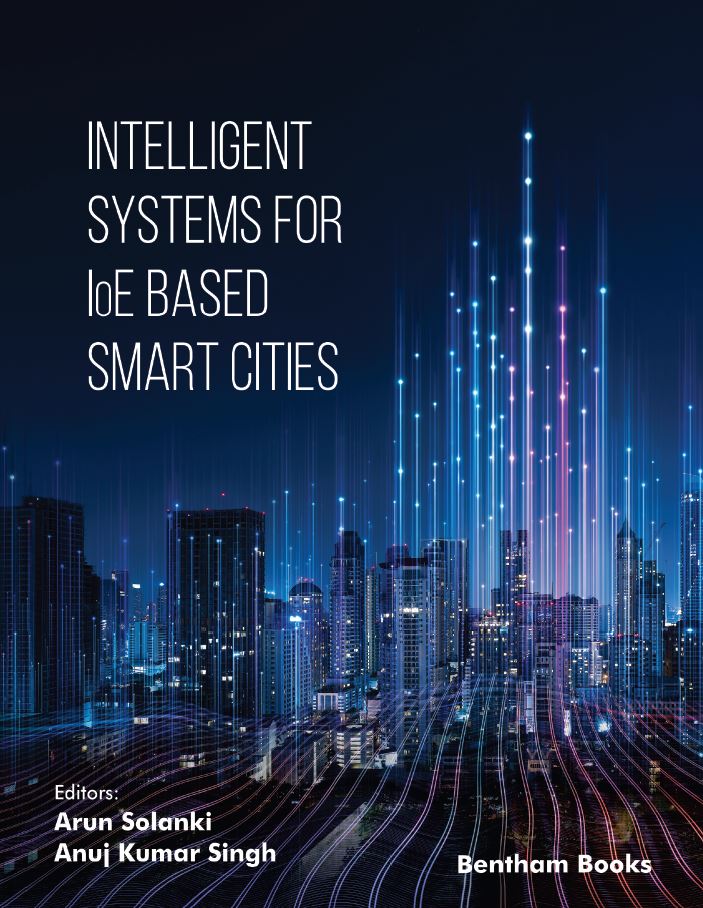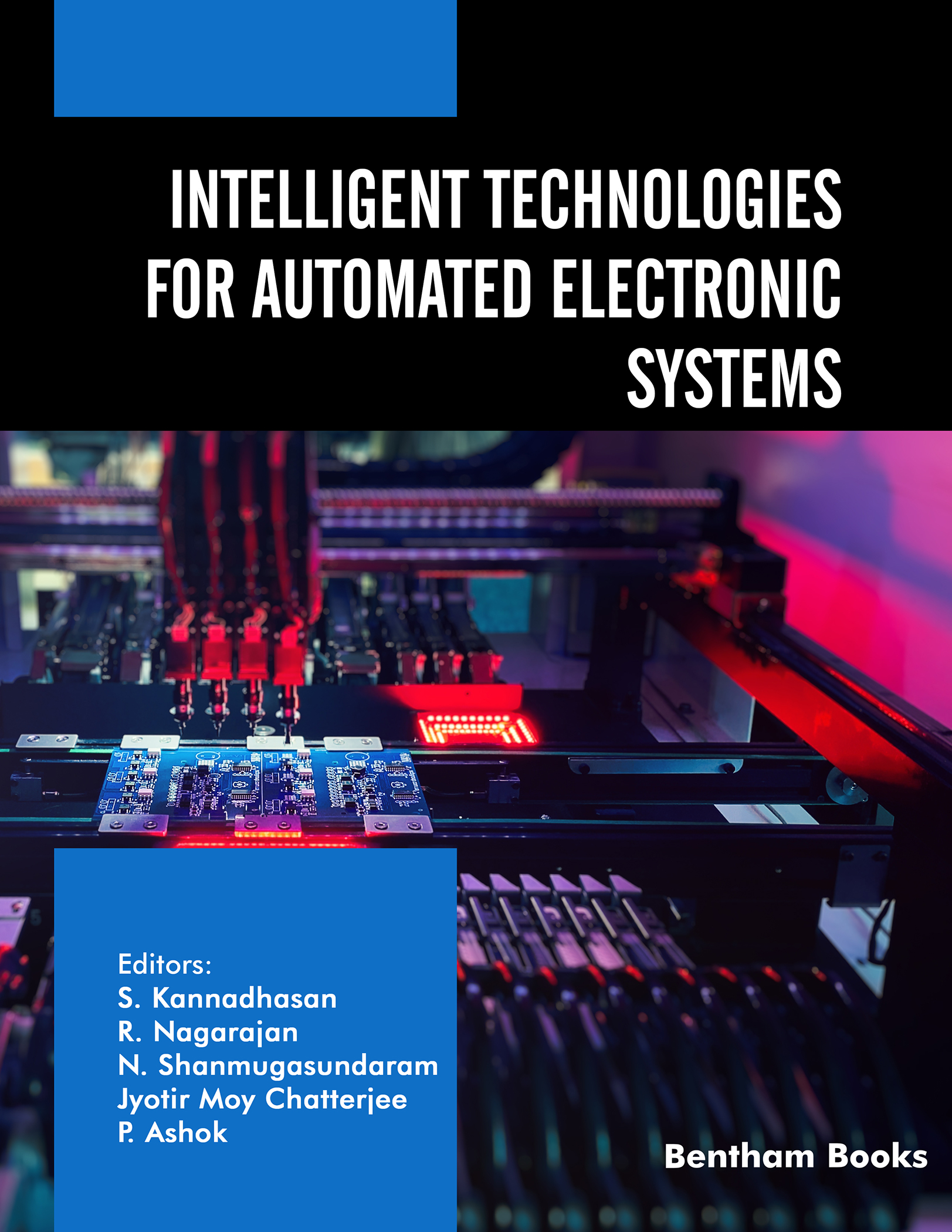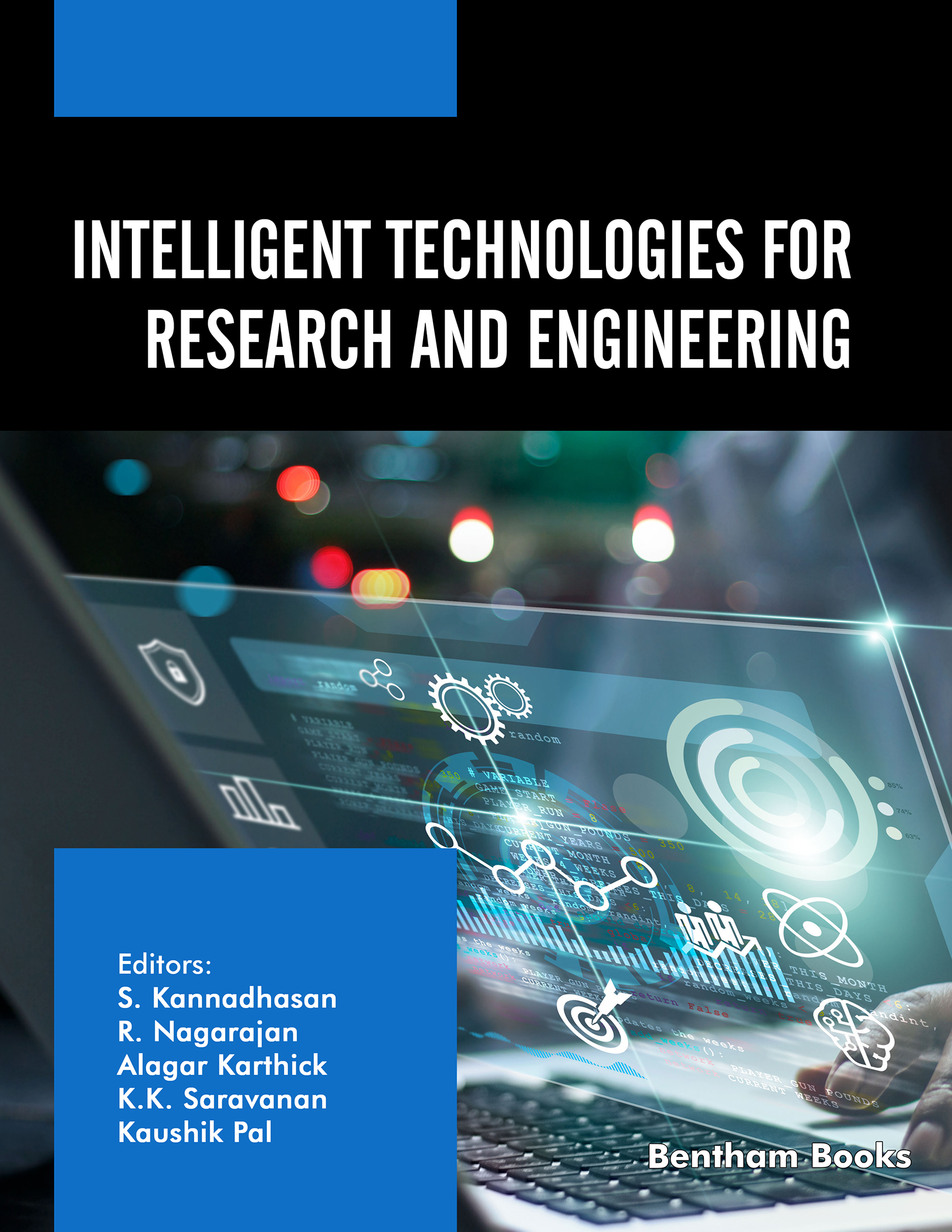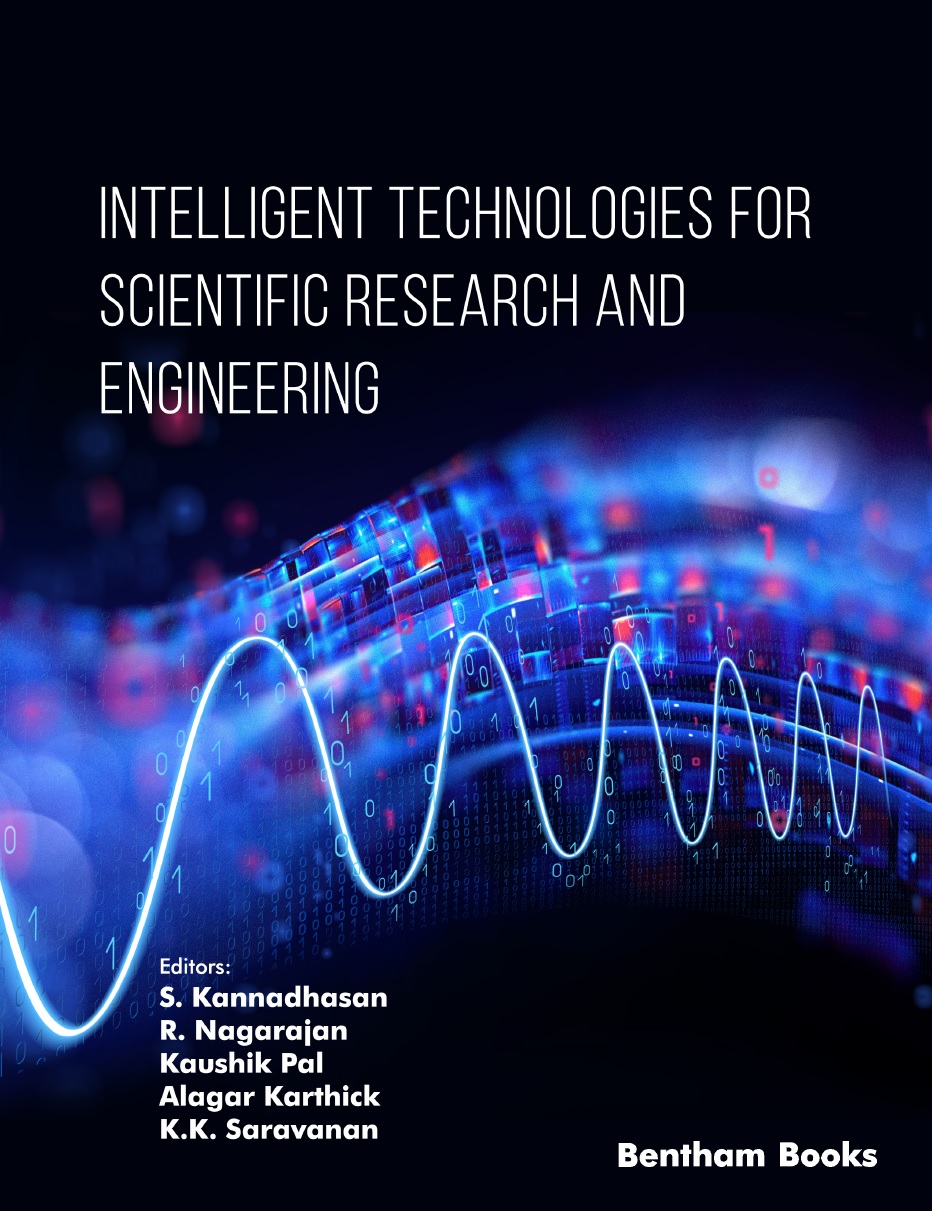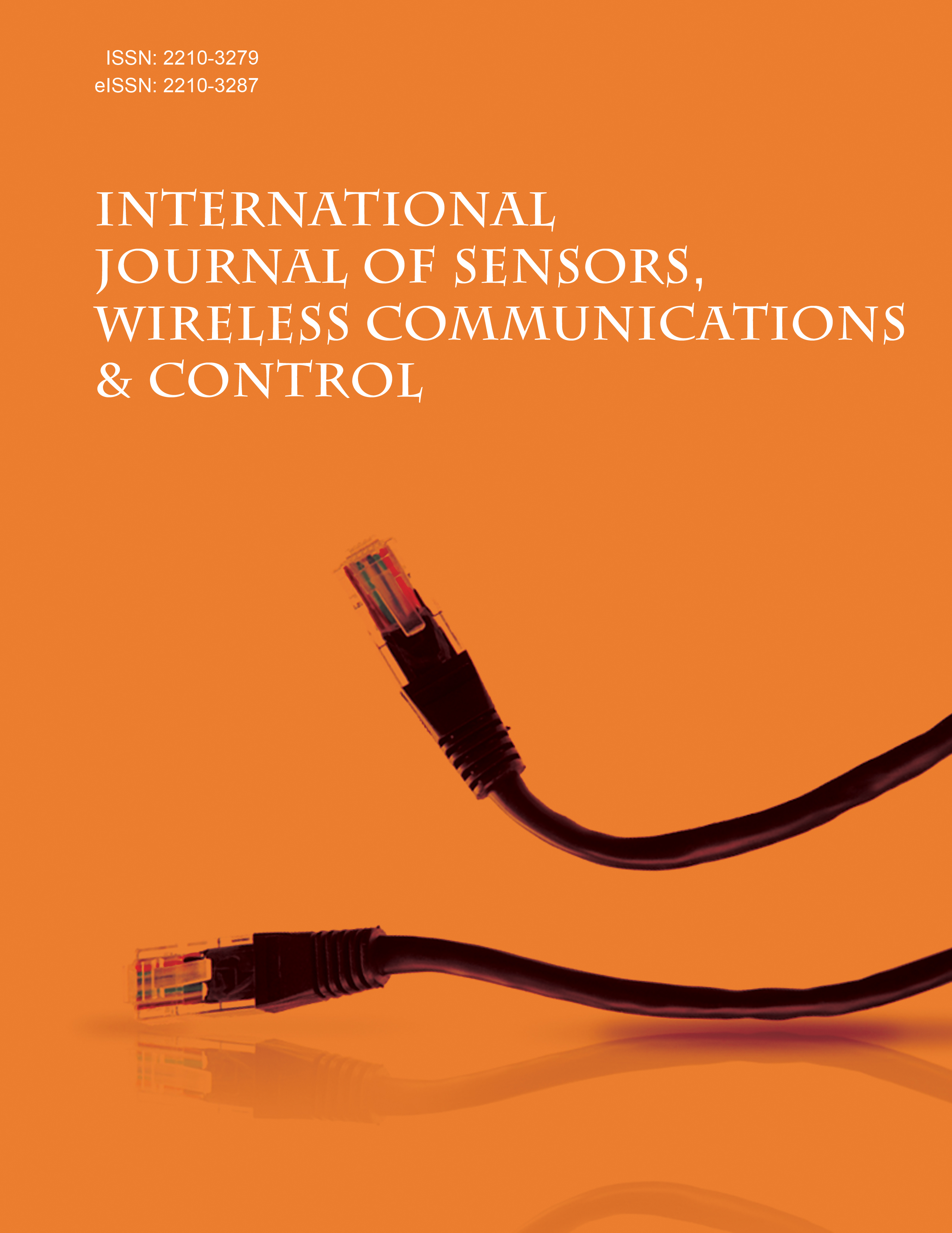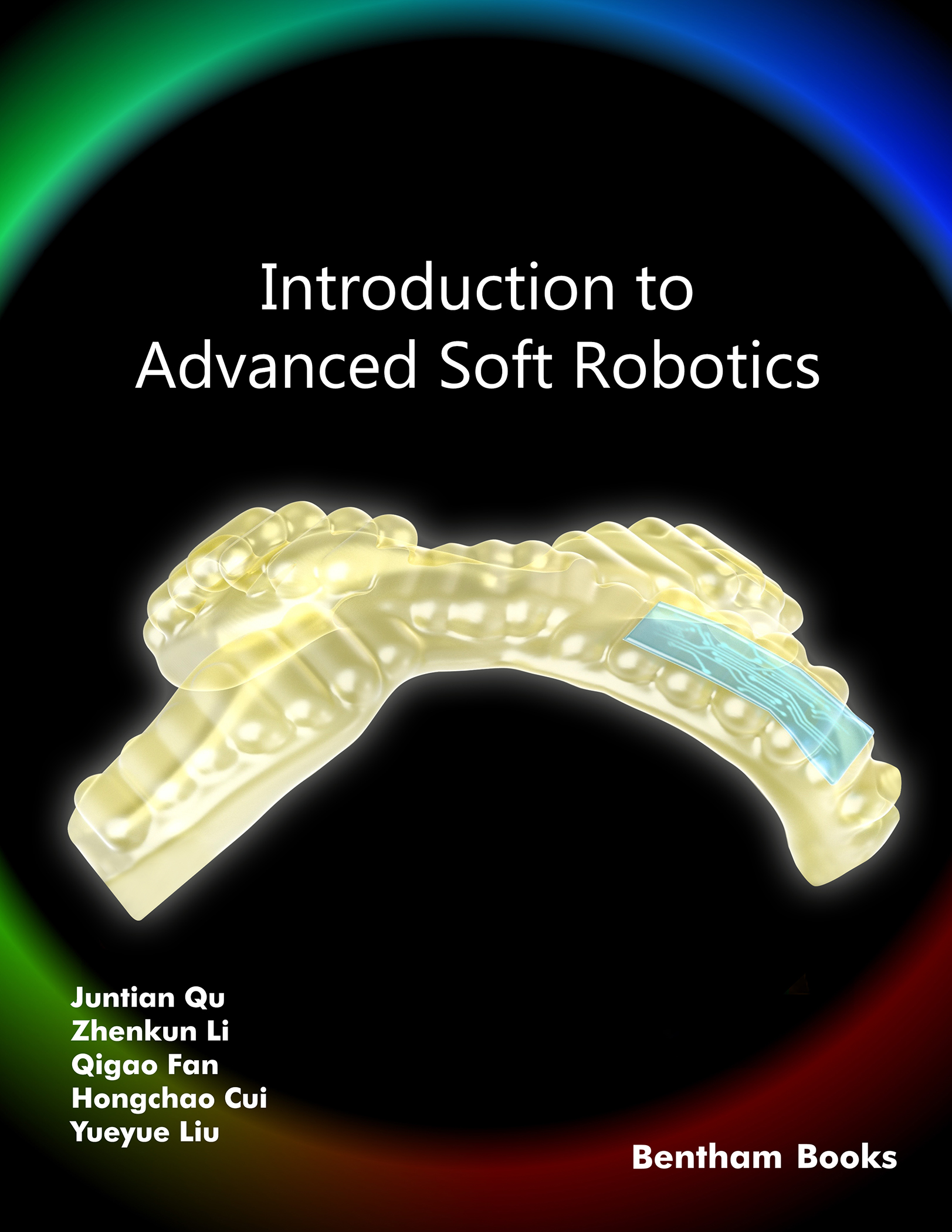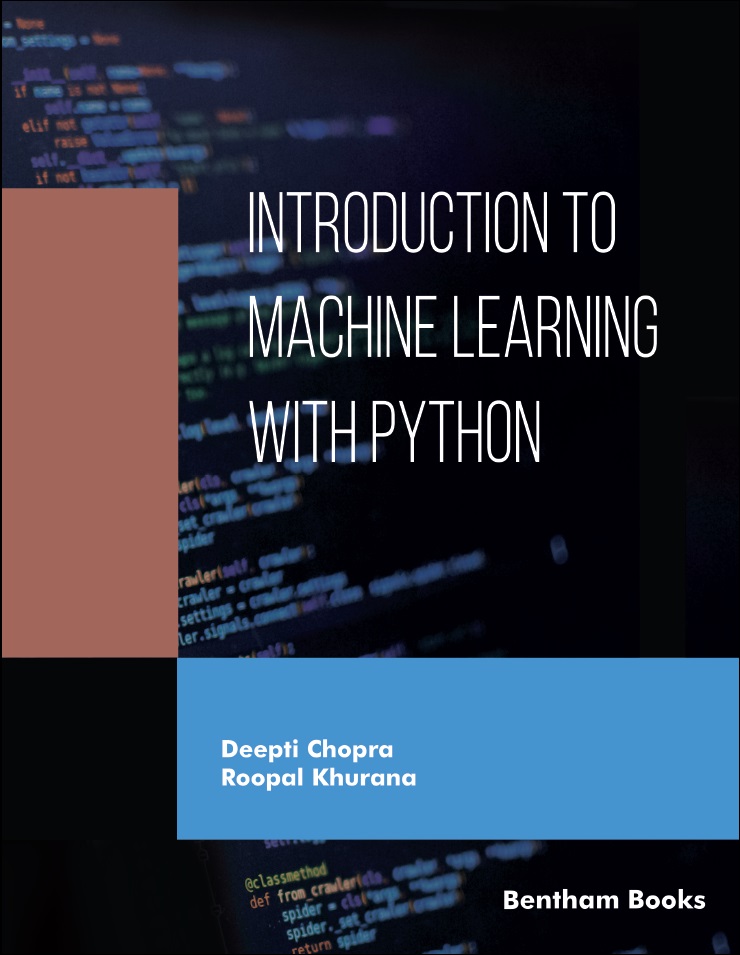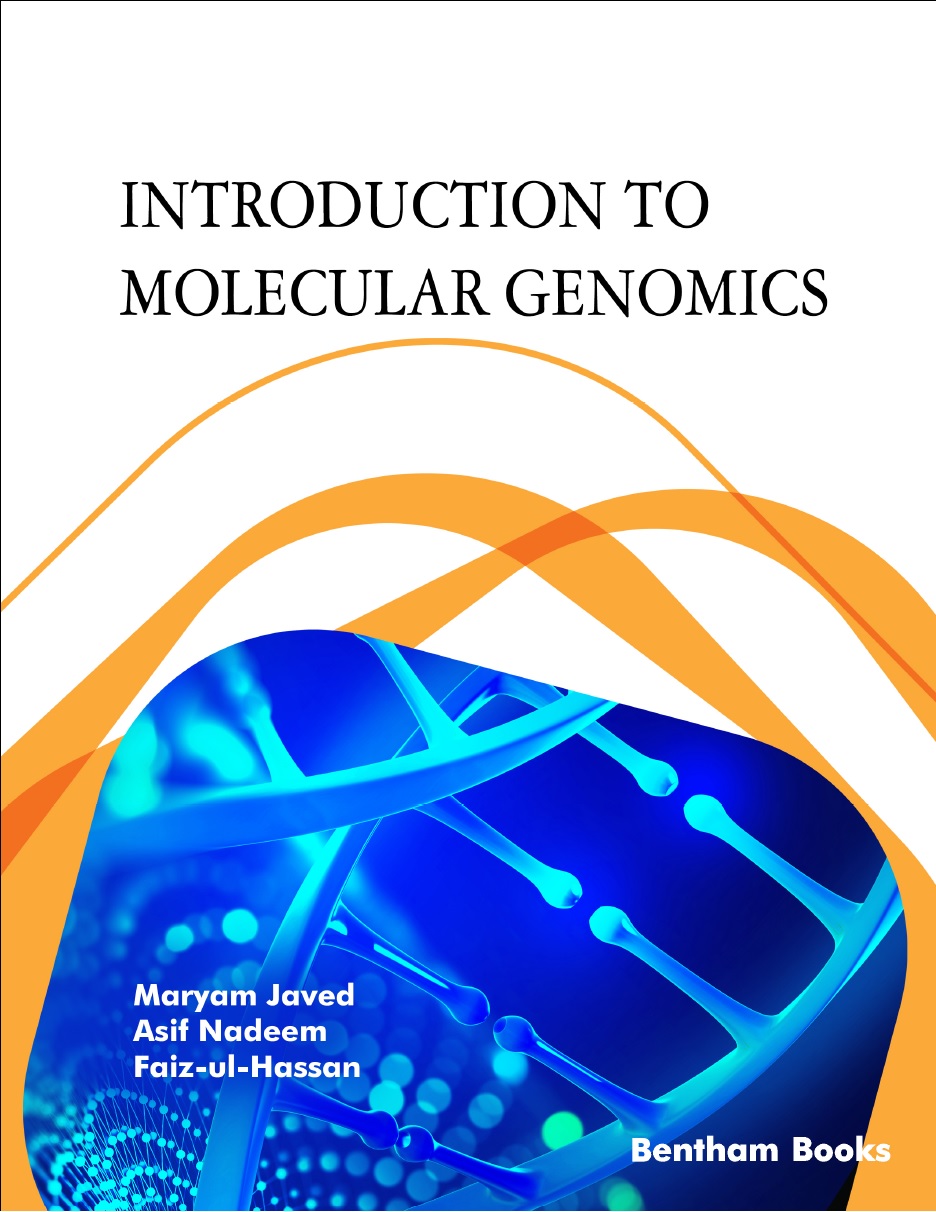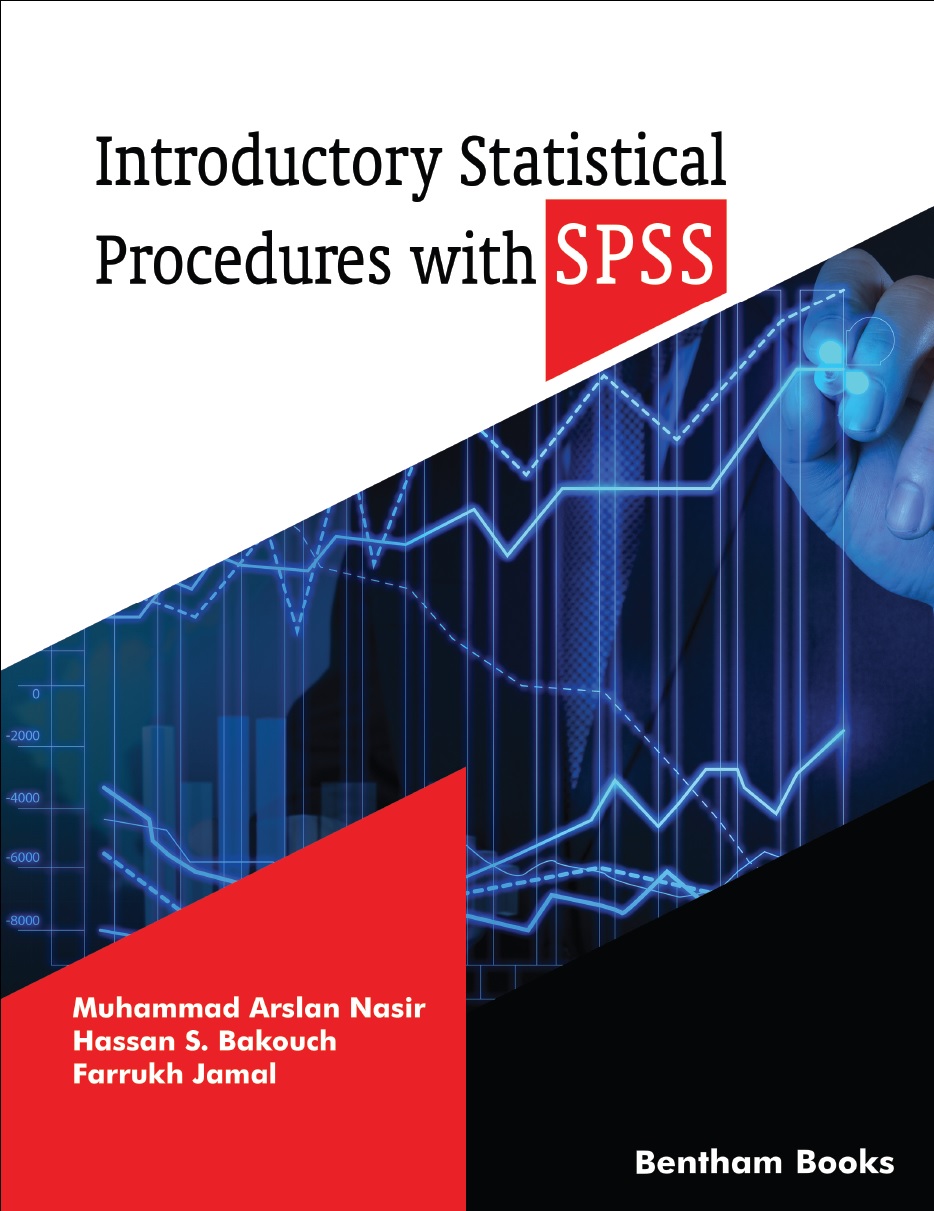- Home
- Publishers
- Bentham Science Publishers
Bentham Science Publishers
Bentham Science Publishers is a major publisher of more than 100 peer-reviewed science, technology and medical (STM) journals, along with a rapidly growing collection of eBooks. Since 1993, Bentham Science Publishers has been catering to the information needs of the pharmaceutical, engineering, biomedical and medical research community.461 - 480 of 812 results
-
-
Induction Motor Computer Models in Three-Phase Stator Reference Frames: A Technical Handbook
More LessThis book is a compilation of knowledge about computer models in the three-phase stator reference frame. Chapters explore several aspects of the topic and build upon research previously presented by contributors. The book aims to provide interesting solutions to problems encountered in the design of railway and analysis in railway motors. The modeling approaches proposed by the authors in this book may become an incentive for readers and researchers to develop their lifehacks to solve new problems in induction motor design and testing.
Key topics presented in the book:
- Approximate calculations of induction motor equivalent T-shaped circuit parameters with the use of catalogue data
- Simulations of different types of shaft load, including fluid coupling
- Receiving static characteristics of an electric machine during simulation by means of dynamic model
- Simulation of the electric drives specific applications with three-phase induction motors building
- Direct start of an induction motor as part of an auxiliary drive of an AC electric locomotive, containing a capacitor phase splitter, starting with different types of shaft loads (fan or compressor).
Special attention has been given to the description of the thermal model of an induction motor with a squirrel-cage rotor, which makes it possible to simulate operating modes when powered by an unbalanced voltage, as well as with squirrel cage defects. The thermal model is presented as a detailed superstructure to the model of electromechanical processes of an induction electric machine.
Other key features of the book include references for further reading, an appendix for the parameters of the equivalent thermal circuit of an NVA-55 induction motor.
The material presented in the book is of interest to railway motor engineers, specialists in electromechanics and electric drives who use SPICE-compatible CAD applications in their work.
-
-
-
Industrial Applications of Polymer Composites
Frontiers in Polymer Science: Volume 1
More LessThis volume is a comprehensive guide to the industrial use of polymer composites. Edited contributions demonstrate the application of these materials for different industrial sectors. The book covers the benefits, future potential, and manufacturing techniques of different types of polymers. Contributors also address challenges in using nanopolymers in these industries. Readers will find valuable insights into the current demand and supply of polymer composites and future scope for research and development in this field of polymer science. The volume presents seven chapters, each exploring a different application of polymer composites. Chapter 1 discusses the use of polymer additives for improving classical concrete and the workability and durability of polymer composite concrete. Chapter 2 explores the use of polymer nanocomposites in packaging, including smart/intelligent packaging, modified atmosphere packaging, and vacuum packaging. Chapter 3 delves into the use of polymer composites in tissue engineering, including manufacturing techniques and various applications. Chapter 4 explores energy storage applications for polymer composites, while Chapter 5 discusses their use in microbial fuel cells. Chapter 6 explores the use of carbon nanotubes in polymer composite gas sensors. Finally, Chapter 7 discusses the use of polymer composites in automotive applications. This is an ideal reference for researchers, scientists, engineers, and professionals in the fields of materials science, polymer science, engineering, and nanotechnology. The content is also suitable for graduate and postgraduate students studying industrial manufacturing.
-
-
-
Industrial Applications of Soil Microbes
More LessThis volume is a compilation of reviews on the industrial usage of soil microorganisms. The contents include 16 brief reviews on different soil microbe assisted industrial processes. Readers will be updated about recent applications of soil bacteria, fungi and algae in sectors such as agriculture, biotechnology, environmental management.
The reviews also cover special topics like sustainable agriculture, biodiversity, ecology, and intellectual property rights of patented strains, giving a broad perspective on industrial applications of soil microbes.
Volume 3 emphasizes various soil microorganisms including cyanobacteria and mycorrhiza. The 16 chapters cover the ecological significance of mycorrhiza to and their role in sustainable agriculture, microbial interactions with nematodes, microbes as biocontrol agents, and the use of endophytes in agriculture, Chapters also shed light on industrial aspects and microbial biotransformation, providing a comprehensive view of sustainable agricultural practices. Special topics such as the microbial carotenoids are also included.
-
-
-
Industrial Applications of Soil Microbes: Volume 1
More LessThis volume is a compilation of reviews on the industrial usage of soil microorganisms. The contents include 15 brief reviews on different soil microbe assisted industrial processes. Readers will be updated about recent applications of soil bacteria, fungi and algae in sectors such as agriculture, biotechnology, environmental management.
The reviews also cover special topics like sustainable agriculture, biodiversity, ecology, and intellectual property rights of patented strains, giving a broad perspective on industrial applications of soil microbes. The text is easy to understand for readers of all levels, with references provided for the benefit of advanced readers.
-
-
-
Industrial Applications of Soil Microbes: Volume 2
More LessThis volume is a compilation of reviews on the industrial usage of soil microorganisms. The contents include 16 brief reviews on different soil microbe assisted industrial processes. Readers will be updated about recent applications of soil bacteria, fungi and algae in sectors such as agriculture, biotechnology, environmental management.
The reviews also cover special topics like sustainable agriculture, biodiversity, ecology, and intellectual property rights of patented strains, giving a broad perspective on industrial applications of soil microbes.
Volume 2 includes reviews on destructive microbes like Macrophomina Phaseolina, eco-friendly microbes like Beauveria Bassiana, the identification of fungi in the rhizosphere, the industrial application of Trichoderma, and other topics. The text is easy to understand for readers of all levels, with references provided for the benefit of advanced readers.
-
-
-
Infectious Diseases
Herbal Medicine: Back to the Future: Volume 6
More LessHerbal Medicine: Back to the Future compiles expert reviews on the application of herbal medicines (including Ayurveda, Chinese traditional medicines and alternative therapies) to treat different ailments. The book series demonstrates the use of sophisticated methods to understand traditional medicine, while providing readers a glimpse into the future of herbal medicine.
This volume presents reviews of plant based therapies useful for treating different infectious diseases. The reviews highlight different sources of antiviral, antibacterial and antifungal herbs. The volume concludes with a review on the therapeutic potential of herbs for treating rheumatoid arthritis. The chapters included in this volume are as follows:
- Brazilian Siparuna species as a Source of antiviral agents
- Antimicrobial and antifungal potential of Indian spices
- Role of herbal medicines in the treatment of infectious diseases
- Herbal medicine: traditional approach to treat infectious diseases
- Exploring the therapeutic potential of medicinal plants for rheumatoid arthritis
This volume is essential reading for all researchers in the field of natural product chemistry and pharmacology. Medical professionals involved in internal medicine who seek to improve their knowledge about herbal medicine and alternative therapies for tropical and other infectious diseases will also benefit from the contents of the volume.
-
-
-
Infectious Disorders - Drug Targets (Formerly Current Drug Targets - Infectious Disorders)
More LessInfectious Disorders - Drug Targets aims to cover all the latest and outstanding developments in medicinal chemistry, pharmacology, molecular biology, genomics and biochemistry of contemporary molecular targets involved in infectious disorders e.g. disease specific proteins, receptors, enzymes and genes. Each issue of the journal contains a series of timely in-depth reviews/mini-reviews and research articles written by leaders in the field covering a range of current topics on drug targets involved in infectious disorders. As the discovery, identification, characterization and validation of novel human drug targets for anti-infective drug discovery continue to grow, this journal will be essential reading for all pharmaceutical scientists involved in drug design, discovery and development. All aspects related to viral or bacterial diseases including HIV, AIDS and other sexually transmitted diseases (STDs) are also included in the scope of the journal.
-
-
-
Inflammation & Allergy-Drug Targets (Formerly Current Drug Targets - Inflammation & Allergy) (Discontinued)
More LessInflammation & Allergy - Drug Targets aims to cover all the latest and outstanding developments on the medicinal chemistry, pharmacology, molecular biology, genomics and biochemistry of contemporary molecular targets involved in inflammation and allergy e.g. disease specific proteins, receptors, enzymes, genes. Each issue of the journal contains a series of timely in-depth reviews written by leaders in the field covering a range of current topics on drug targets involved in inflammation and allergy. As the discovery, identification, characterization and validation of novel human drug targets for anti-inflammation and allergy drug discovery continues to grow, this journal has become essential reading for all pharmaceutical scientists involved in drug discovery and development.
-
-
-
Intelligent Diagnosis of Lung Cancer and Respiratory Diseases
Intelligent Systems in Radiology: Volume 1
More LessIntelligent Diagnosis of Lung Cancer and Respiratory Diseases presents information about diseases of the respiratory system and the relevant diagnostic imaging techniques. The book focuses on intelligent diagnostic imaging systems.
The first section of the book deals with the physiological underpinnings of 3 major diseases that affect the respiratory system: tuberculosis, lung cancer and COVID-19. This section also explains the basic principles of artificial Intelligence that support the diagnosis of these diseases.
The next section presents applications of intelligent systems to support the imaging diagnosis of COVID-19 and lung cancer, with emphasis on digital health and telemedicine approaches.
Each chapter is organized into a readable format, and is accompanied with a detailed bibliographical information for further reading.
This book is a reference for everyone seeking to understand how artificial intelligence can provide solutions for diagnostic support systems by processing and analyzing radiological images to improve early diagnosis and, consequently, lung disease prognosis.
-
-
-
Intelligent Systems for IoE Based Smart Cities
More LessIntelligent Systems for IoE Based Smart Cities provides simplified information about complexities of cyber physical systems, the Internet of Everything (IoE) and smart city infrastructure. It presents 11 edited chapters that reveal how intelligent systems and IoE are driving the evolution of smart cities, making them more efficient, interconnected, and responsive to the needs of citizens.
The book content represents comprehensive exploration of the transformative potential and challenges of IoE-based smart cities, fueled by Artificial Intelligence (AI) and Machine Learning (ML) innovations.
Key Topics:
Physical layer design considerations that underpin smart city infrastructure
Enabling technologies for intelligent systems within the context of smart computing environments
Smart sensors and actuators, their applications, challenges, and future trends in IoE-based smart cities
Applications, enabling technologies, challenges, and future trends of IoE for smart cities.
The integration of Artificial Intelligence, Natural Language Processing, and smart cities for enhanced urban experiences
machine learning-based intrusion detection techniques for countering attacks on the Internet of Vehicles
Smartphone-based indoor positioning applications using trilateration and the role of sensors in IoT ecosystems
IoT, blockchain, and cloud-based technology for secure frameworks and data analytics
Blockchain and smart contracts in shaping the future of smart cities.
This is a timely reference for researchers, professionals, and students interested in the convergence of IoT, intelligent systems and urban studies into smart city planning and design.
-
-
-
Intelligent Technologies for Automated Electronic Systems
Advanced Technologies for Science and Engineering
More LessThis volume explores a diverse range of applications for automated machine learning and predictive analytics. The content provides use cases for machine learning in different industries such as healthcare, agriculture, cybersecurity, computing and transportation.
Chapter 1 introduces an innovative device for automatically notifying and analyzing the impact of automobile accidents. Chapter 2 focuses on the detection of malaria using systematized image processing techniques. In Chapter 3, an intelligent technique based on LMEPOP and fuzzy logic for the segmentation of defocus blur is discussed. Predictive analytics is introduced in Chapter 4, providing an overview of this emerging field. Chapter 5 delves into discrete event system simulation, offering insights into its applications.
The performance analysis of different hypervisors in OS virtualization is explored in Chapter 6. Load balancing in cloud computing is the subject of investigation in Chapter 7. Chapter 8 presents a survey on a facial and fingerprint-based voting system utilizing deep learning techniques. Chapter 9 explores IoT-based automated decision-making with data analytics in agriculture. Biometric recognition through modality fusion is investigated in Chapter 10. Chapter 11 offers a new perspective on evaluating machine learning algorithms for predicting employee performance. Pre-process methods for cardiovascular diseases diagnosis using CT angiography images are discussed in Chapter 12. Chapter 13 presents the implementation of a smart wheelchair using ultrasonic sensors and LabVIEW.
Cryptography using the Internet of Things is the focus of Chapter 14. Chapter 15 explores machine learning applications for traffic sign recognition, and the book concludes with Chapter 16, which analyzes machine learning algorithms in healthcare.
The book is a resource for academics, researchers, educators and professionals in the technology sector who want to learn about current trends in intelligent technologies.
-
-
-
Intelligent Technologies for Research and Engineering
Advanced Technologies for Science and Engineering: Volume 3
More LessThis volume explores diverse applications for automated machine learning and predictive analytics. The content provides use cases for machine learning in different industries such as healthcare, agriculture, cybersecurity, computing and transportation.
Key highlights of this volume include topics on engineering for underwater navigation, and computer vision for healthcare and biometric applications.
Chapters 1-4 delve into innovative signal detection, biometric authentication, underwater AUV localization, and COVID-19 face mask detection. Chapters 5-9 focus on wireless pH sensing, differential pattern identification, economic considerations in off-grid hybrid power, high optimization of image transmission, and ANN-based IoT-bot traffic detection. Chapters 10-12 cover mixed-signal VLSI design, pre-placement 3D floor planning, and bio-mimic robotic fish. Finally, Chapters 13 and 14 explore underwater robotic fish and IoT-based automatic irrigation systems, providing a comprehensive overview of cutting-edge technological advancements.
The book is a resource for academics, researchers, educators and professionals in the technology sector who want to learn about current trends in intelligent technologies.
-
-
-
Intelligent Technologies for Scientific Research and Engineering
More LessThis reference is a compilation of work from different technology groups that give an insight into strategies used for technology optimization and technical R&D. Each of the 14 chapters presented in the book are contributed by engineering experts and focus on different aspects of smart technologies. The chapters cover a wide range of technical disciplines with a list of references for further reading. The compilation demonstrates methods that are useful to apprentices and researchers involved in the development of technologies in different fields: & Wireless networking & Signal processing & Control and machine engineering & SOC design & Materials science and nanotechnology & Biomedical engineering & Power electronics The contributions in this book provide interesting examples for product development such as custom nanomaterials, digital electronics, smart devices and antennas. The content also serves as a reference for designing special components used for complex systems like wireless communication systems, automated control systems and organic waste processing systems. The content is structured in a format suitable for both learners and advanced researchers, making this reference essential to engineers at all levels.
-
-
-
International Journal of Sensors Wireless Communications and Control
More LessInternational Journal of Sensors, Wireless Communications and Control publishes timely research articles, full-length/ mini reviews and communications on these three strongly related areas, with emphasis on networked control systems whose sensors are interconnected via wireless communication networks.
The emergence of high speed wireless network technologies allows a cluster of devices to be linked together economically to form a distributed system. Wireless communication is playing an increasingly important role in such distributed systems. Transmitting sensor measurements and control commands over wireless links allows rapid deployment, flexible installation, fully mobile operation and prevents the cable wear and tear problem in industrial automation, healthcare and environmental assessment. Wireless networked systems has raised and continues to raise fundamental challenges in the fields of science, engineering and industrial applications, hence, more new modelling techniques, problem formulations and solutions are required.
-
-
-
Introduction to Advanced Soft Robotics
Frontiers in Electrical Engineering: Volume 2
More LessIntroduction to Advanced Soft Robotics is an introductory textbook on soft body robotics. The content is designed to enable readers to better understand soft body robotics. Starting with an introduction to the subject, contents explain fundamental concepts such as perception and sensing, fabrication techniques and material design. These introductory chapters demonstrate the design concept and related design structures of soft robots from multiple perspectives, which can provide considerable design references for robotics learners and enthusiasts. Next, the book explains modeling and control for soft robotics and the applications. Key features of this book include easy-to-understand language and format, simple illustrations and a balanced overview of the subject (including a section on challenges and future prospects for soft robotics), and scientific references.
-
-
-
Introduction to Machine Learning with Python
More LessMachine learning is a subfield of artificial intelligence, broadly defined as a machine's capability to imitate intelligent human behavior. Like humans, machines become capable of making intelligent decisions by learning from their past experiences. Machine learning is being employed in many applications, including fraud detection and prevention, self-driving cars, recommendation systems, facial recognition technology, and intelligent computing. This book helps beginners learn the art and science of machine learning. It presens real-world examples that leverage the popular Python machine learning ecosystem,
The topics covered in this book include machine learning basics: supervised and unsupervised learning, linear regression and logistic regression, Support Vector Machines (SVMs). It also delves into special topics such as neural networks, theory of generalisation, and bias and fairness in machine learning. After reading this book, computer science and engineering students - at college and university levels - will receive a complete understanding of machine learning fundamentals and will be able to implement neural network solutions in information systems, and also extend them to their advantage.
-
-
-
Introduction to Molecular Genomics
More LessIntroduction to Molecular Genomics introduces the college student to the fundamental concepts of molecular biology and genomics. The text puts an emphasis on important topics in the subject that contribute to the learners understanding. These topics include molecular genomics, biodiversity and molecular phenomenon behind evolution of species, modern molecular methods for enhanced genomics research, DNA modifications at the molecular level for transgenic animal species, the role of cell environment on the gene expression, to name a few. The book has been designed to suit the requirements of educational courses in molecular biology, genomics and biochemistry.
Key features
- Covers basic concepts on key topics in molecular biology and genomics
- Simple easy-to-read layout
- Includes references for further reading
- Includes a section on ethical aspects of scientific research
Introduction to Molecular Genomics is a simple primer for students in applied or advanced life science courses at undergraduate levels
-
-
-
Introduction to Sensors in IoT and Cloud Computing Applications
More LessIntroduction to Sensors in IoT and Cloud Computing Applications provides information about sensors and their applications. Readers are first introduced to the concept of small instruments and their application as sensors. The chapters which follow explain Internet of Things (IoT) architecture while providing notes on the implementation, demonstration and related issues of IoT systems. The book continues to explore the topic by providing information about sensor-cloud infrastructure, mobile cloud, fog computing (an extension of cloud computing that takes cloud computing to the cutting-edge of networking where data is produced) and integration of IoT devices with cloud computing. The book also presents notes on the taxonomy of fog-computing systems. The six chapters in this book provide essential information for general readers, and students of computer science to understand the basics of cloud computing networks, related concepts and applications.
-
-
-
Introductory Statistical Procedures with SPSS
More LessSPSS is beneficial for students and researchers in psychology, sociology, psychiatry, and other behavioural sciences, as it performs a wide range of univariate and multivariate operations commonly used in these fields.
Introductory Statistical Procedures with SPSS is an easy to use textbook that presents the core concepts of statistical theory with applications in SPSS. The goal of this book is to give learners simple and clear instructions on how to use recent versions of SPSS, to perform a range of statistical studies. The book chapters explain elementary statistics (descriptive and inferential) giving a detailed understanding of the discussed topics. Each chapter focuses on a specific type of analytical procedure that can be used to understand a wide range of data sets, the majority of which are from the social and behavioural sciences.
Key Features:
- Simple and clear instructions to use SPSS (Version 21) in 10 chapters
- Introduces the reader to core descriptive statistical and probability measures - Covers inferential statistics
- Covers regression and correlation analysis
- Covers multivariate statistics
- Presents many illustrative examples and theoretical problems at the end of each chapter with real-life data
Introductory Statistical Procedures with SPSS is an essential guide for anyone who is interested in learning statistical applications of SPSS. Readers with no prior knowledge of statistics, students at all academic levels and professionals alike will benefit from the information in this text book.
-

